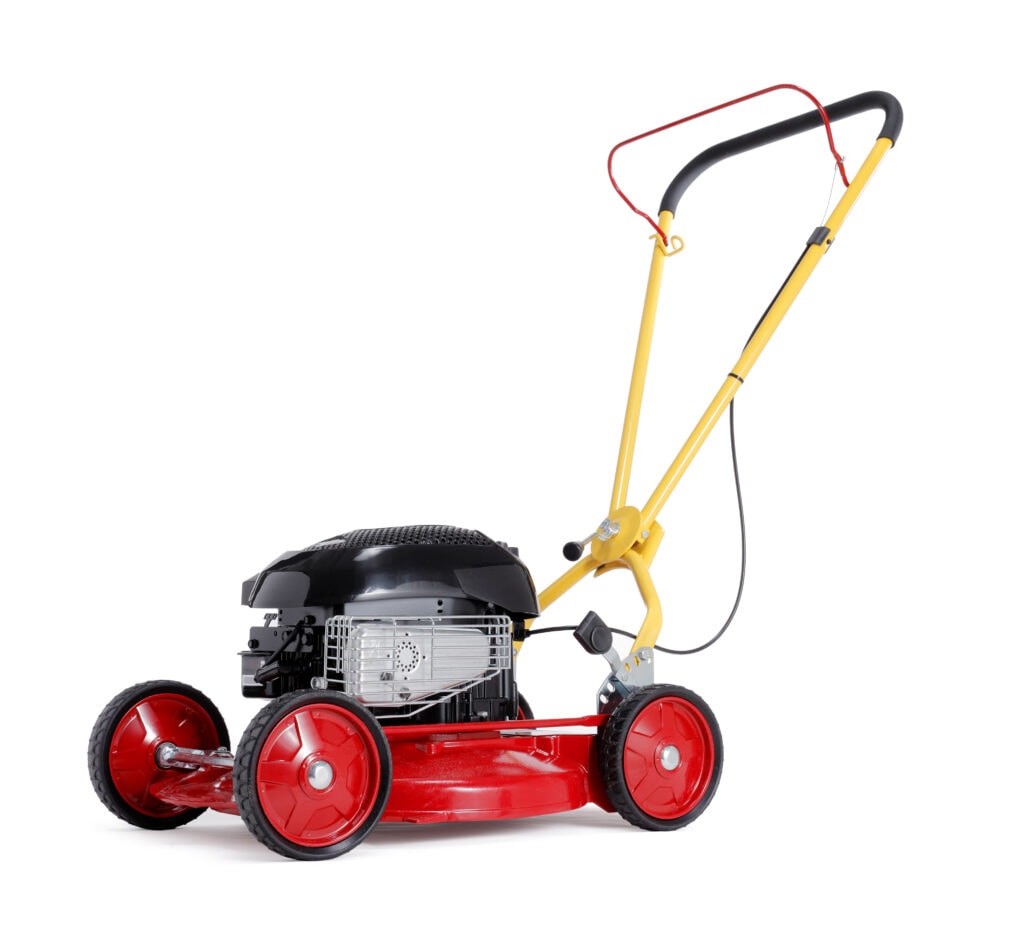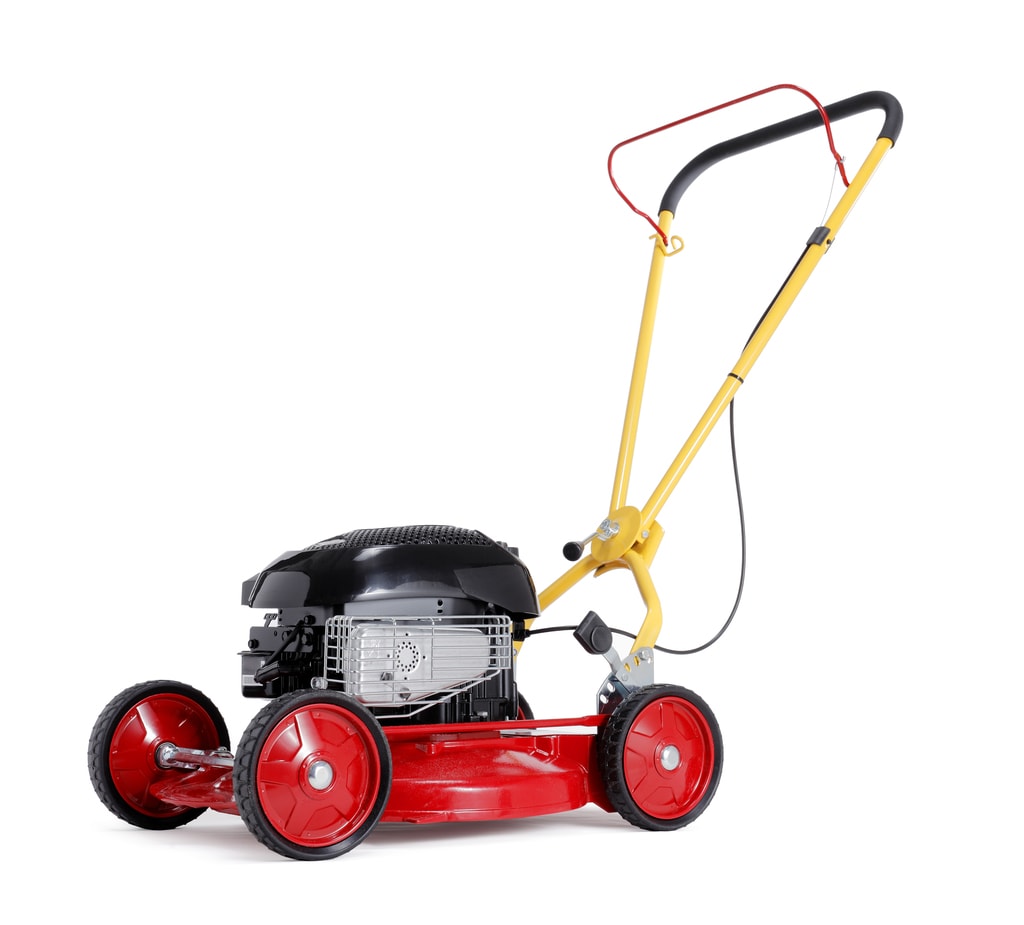
The wrong mower can make cutting your lawn a tedious chore. Yes, you’ll get the job done, eventually–but you’ll waste a lot of your precious time. Choosing the right model for your needs is difficult, considering the many types of lawnmowers out there for you to choose from. In this post, we’ll look at the different types of lawnmowers and what they can do.
With this information, you’ll quickly learn how to buy the right lawnmower for you.
What are the Different Types of Lawn Mowers?
All lawn mowers fall into three broad categories:
- Walk-Behind Mower: These are the powered mower models most people already own. They’re easy to handle and use–and they are affordable. You walk behind the body, guiding it with a handlebar.
- Riding Mower or Lawn Tractor: You’ll find these on larger yards and estates. You sit on the mower and drive it like a small vehicle. It requires a relatively flat surface to operate correctly. If you have more than a 1/4 acre of land, a riding mower might be a worthwhile investment.
- Robotic Mower: Brand new; these models aren’t conventional yet. Similar to a robotic vacuum, you put the mower down, define the perimeters of the area, and let it do the work.
The size of your land is usually the best determinant for which type of mower to choose.
What is the Best Lawnmower?
There isn’t one right answer here, because everyone’s needs are different. The best lawn mower is the one that’s cost-effective and convenient for you.
Start by establishing how much ground you need to cover. You may then narrow your options by selecting the features you find most helpful. Let’s look at the difference between walk-behind and riding mowers. Robotic options aren’t common enough yet to feature here.
Walk-Behind or Push Mowers
If you need maximum versatility, start with lawnmowers that you walk behind. Here are some features to consider.
Drive
Drive refers to whether or not a mower is self-propelled and how it moves. A self-propelled electric mower makes life easier when you’re working on uneven ground. A heavy machine with a full bag is difficult to push up a steep hill.
Self-propulsion means that the machine shares the work. In addition to self-propulsion, look at:
- Front-Wheel Drive: Front-wheel drive works best on relatively flat land with many obstacles. You push down the handle, slightly lifting the front wheels, to maneuver more easily.
- Rear-Wheel Drive: Rear-wheel drive works best when you mow up a hill or along its sides. Pushing down on the handle here won’t cause the front tires to lift.
- All-Wheel Drive: If you can find one of these, they’re pricey. They’ll work on most terrains, but they aren’t always worth the extra cost.
Functions
Functions refer to what the mower does with the grass it cuts. You will find three options here:
- Mulch: Here, the blades chop the grass twice, leaving them in an excellent mulch format and redepositing them on the lawn. Mulching is useful for well-maintained gardens since the clippings are rich in nitrogen. If you’re leaving the grass in place, mulching is preferable, as the pieces are smaller.
- Bag: Many mowers come with a compartment to catch the cut grass. This may be either a hard-shell compartment or a pocket. You’ll need to empty the bag periodically. These models are a good option if you like a neat finish and don’t want to rake up the cut grass.
- Side-Discharge: With a side-discharge machine, the motor vents the cut grass out behind and to the side instead of bagging. It’s an excellent way to distribute cut grass evenly.
A single-function mower offers one of these options. A two-function mower provides two options. Not surprisingly, you get all three with a three-function machine.
The cutting action further divides mowers into two categories:
- Reel Mowers: Also known as cylinder mowers, a reel mower traps the grass against a plate and then cuts it off. They work in a similar way to scissors. A reel mower is only useful as a power mower.
- Rotary Mower: These lawnmowers use a rotating blade to cut the grass. These were the first types of mowers.
Lawn Mower Features
Now that we have the essential functions out of the way, it’s time to move on to the fun stuff–the mower’s features.
Fuel Used
Lawnmowers are also categorized by how they’re powered. There are four options for a powered mower here:
- Gas: A gas-powered lawnmower requires a little more maintenance. It’s heavier because it has the fuel-tank to carry. If you live in a remote area or are cutting a large area, gas-powered might be easiest because there are no cords.
- Electric: An electric-powered lawn mower runs more quietly and requires less maintenance. It’s limited in that you need a long extension cord to power them. The upside is that you don’t have to worry about gas running out or a low battery.
- Battery: A battery-powered lawn mower merges the convenience of gas and the economy of electricity. As long as you’ve got enough charge in the cell, you may cut wherever you like. Battery-powered and electric mowers are better in smaller yards.
- Human: These are the simplest to operate. They’re a cylinder with rotating blades. The upside is that you don’t need fuel for them. With these non-electric mowers, rotary blades, and your effort mow the lawn.
Gas Engine Sizes
Lawnmower engine sizes range from 140 CC to 190 CC. The bigger the engine, the more powerful, but more power isn’t always better. A powerful motor is more likely to run into trouble in tall grass. If you need self-propulsion, you should look at the more powerful engines.
Which lawnmower engine is best? If you buy a machine too powerful, you’re paying for capacity you won’t use. A model that isn’t powerful enough is just as wasteful because it won’t do a good job.
Aside from that, consider spending a little more on a reputable brand.
The Size and Type of Wheels
If you’re mowing an uneven surface, having larger rear wheels is an advantage. When the back wheels are more prominent, it’s easier to roll over pitted, uneven surfaces.
Wheels with ball bearings in them are more accessible to push around than brushing-type wheels.
Riding Mowers
There are three types of ride mowers: lawn tractors, rear-engine riding mowers, and zero-turn mowers.
Lawn Tractor
You’ll find everything from a simple single-cylinder engine to fuel-injected models. The engine power is secondary to the deck width. The higher the deck width, the more distance the mower will cover in one sweep.
Work out how many acres a mower will cover by dividing the deck width by twelve. A lawn tractor with a deck width of 42 inches will easily cut 3.5 acres.
The typical lawn tractor deck width ranges between 42 and 54 inches.
Rear-Engine Riding Mower
These lawnmowers are an excellent solution for those with a large lawn. They won’t cover as much ground like a lawn tractor, but they offer enough power to make mowing simple.
The rear-engine deck sizes range from 30 to 33 inches.
Zero-Turn Mower
Landscapers and contractors typically use mowers with a zero-degree turning radius. If you can afford them, they’ll prove useful in yards with unusual dimensions.
These mowers are rear-wheel driven and turn quickly. Their primary advantage over the standard ride-on mower is their maneuverability. Turning on the spot is comfortable with the in-built hydraulics system.
Zero-turn mowers can round corners and sneak in and out of tight spots. They’re fun–but usually overkill for the regular homeowner.
Now that you know what to look for, good luck as you start your search for the model of lawnmower that will make your life simpler.

